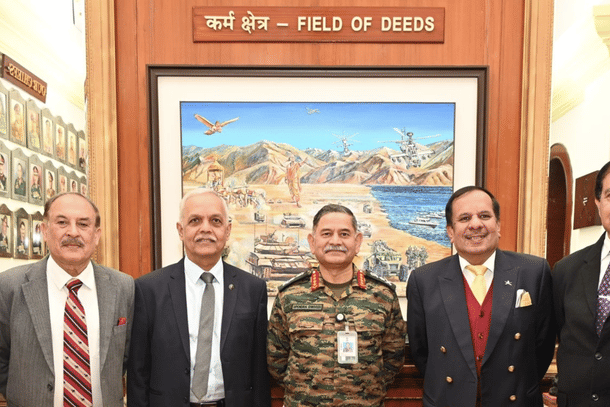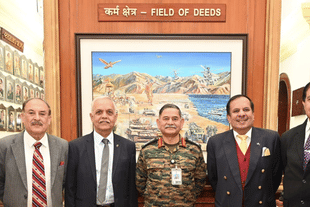News Brief
Why Was The 1971 War Painting Featuring Pakistan's Surrender Removed? General Dwivedi Explains The Shift
Kuldeep Negi
Jan 15, 2025, 11:03 AM | Updated Jan 17, 2025, 03:12 PM IST
Save & read from anywhere!
Bookmark stories for easy access on any device or the Swarajya app.


Army Chief General Upendra Dwivedi has defended the decision to replace the iconic painting depicting Pakistan's surrender in the 1971 war with a new artwork titled "Karma Kshetra" at his office in Raisina Hills.
The 1971 war painting, previously displayed in the Army chief's lounge, was relocated in December to the Manekshaw Convention Centre.
The relocation of the historical painting sparked discontent among several Army veterans and drew criticism from certain quarters.
"If you see the golden history of India -- it has three chapters. It has the British era, the Mughal era and the era before that. If we wish to connect that and the Army's vision, symbolism becomes important," General Dwivedi said, India Today reported.
Titled "Karma Kshetra," which translates to "Field of Deeds," the new painting is a creation of Lieutenant Colonel Thomas Jacob of the 28 Madras regiment.
According to the Army, the painting depicts the military as a guardian of "Dharma," safeguarding national values while highlighting its evolution into a technologically-advanced integrated force, according to the Army.
The artwork incorporates elements such as the snow-capped mountains of Pangong Tso in eastern Ladakh, Krishna's chariot, and Chanakya, which represent strategic wisdom.
General Dwivedi suggested that the new painting was made considering the current realities, as he mentioned the re-balancing of troops in view of challenges coming from the northern front.
The Army Chief said the painting was created by Lt Col Jacob, who belongs to the younger generation in the force.
"It is also being said that there is a semi-clad Brahmin standing at the centre on the banks of Pangong Tso," he said.
If Indians do not know Chanakya, they need to refer back to their civilisational approach, he said.
The Army chief said the new painting symbolises the past, the present and the future.
"If I have to connect the past, present and future, it symbolises that," he said.
The Army chief has two lounges and the surrender painting is in the lounge at Manekshaw Centre.
Also Read: Arvind Kejriwal To Be Prosecuted In Delhi Liquor Policy Case As Centre Grants Approval To ED
Kuldeep is Senior Editor (Newsroom) at Swarajya. He tweets at @kaydnegi.




